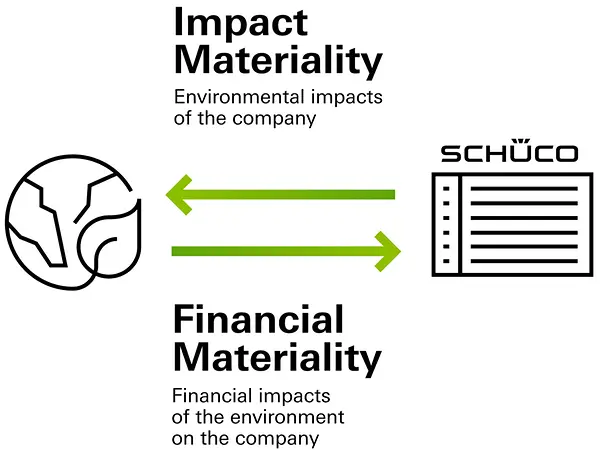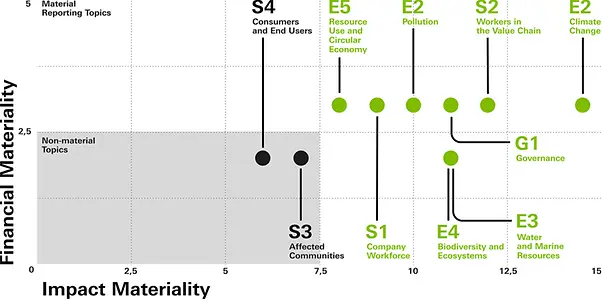Eight material and two non-material topic areas
As part of the process, eight topic areas were identified as material (see illustration). This assessment was made in accordance with ESRS 1 against set criteria, which were defined using a transparent assessment system. More details of our four-stage process can be found in the “Methodology” section.
Using this method, each topic was allocated a specific score. The topic was assessed as “material” if it achieved a score of at least 7.5 (for “Impact Materiality”) or 2.5 (for “Financial Materiality”). The topic areas “Consumers and end-users” and “Affected communities” were identified as non-material based on our B2B-focused business model and very limited risks locally.




